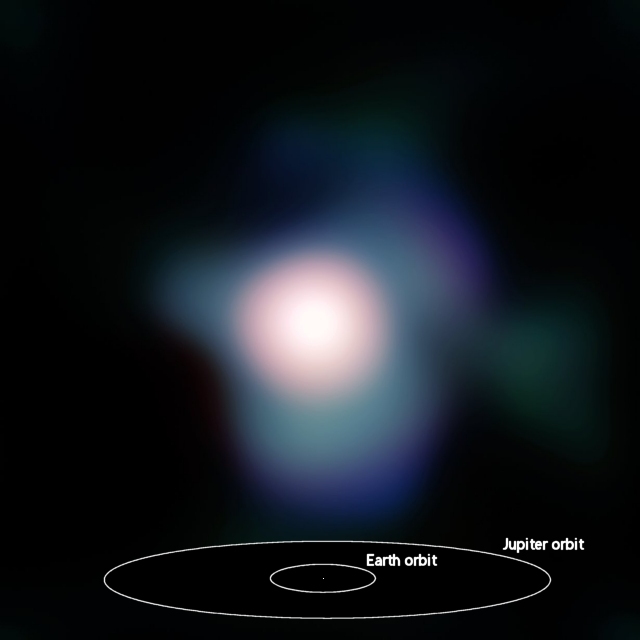Astronomers have a fairly good rule of thumb for identifying planets and stars. We say planets appear as a disc, while stars always appear as a point of light.
While being good generally, there are a few exceptions, obviously we can see the Sun has a disc as its so close to us compared to other stars. And assuming you have a large telescope, something like the Very Large Telescope in Chile, you can resolve about a dozen other stars as discs, R Doradus is one of the larger ones and so is Betelgeuse, the bright star in Orion's shoulder. Here's the new image taken by the telescope, I've drawn on Earth and Jupiter's orbit to give a sense of scale.

Over the 20 years or so we've been able to see the disc of Betelgeuse, we've noticed its shrunk in diametre by about 75 million kilometres. Discovered in the image above is the halo of gas surrounding the star. Confirming what many have suspected, its getting on in years and has started its collapse, meaning it could go supernova within a few thousand years, ideally it'll go supernova in about 6 months time - but I doubt I'm that lucky. When it does it'll be visible in daylight for weeks and at its peak it'll be brighter than the Moon.